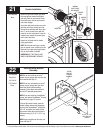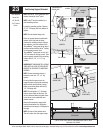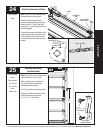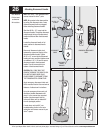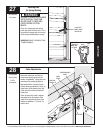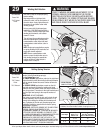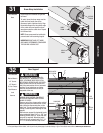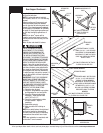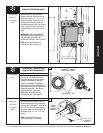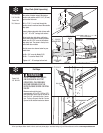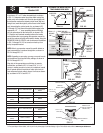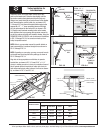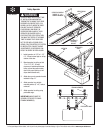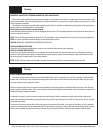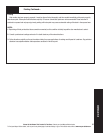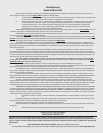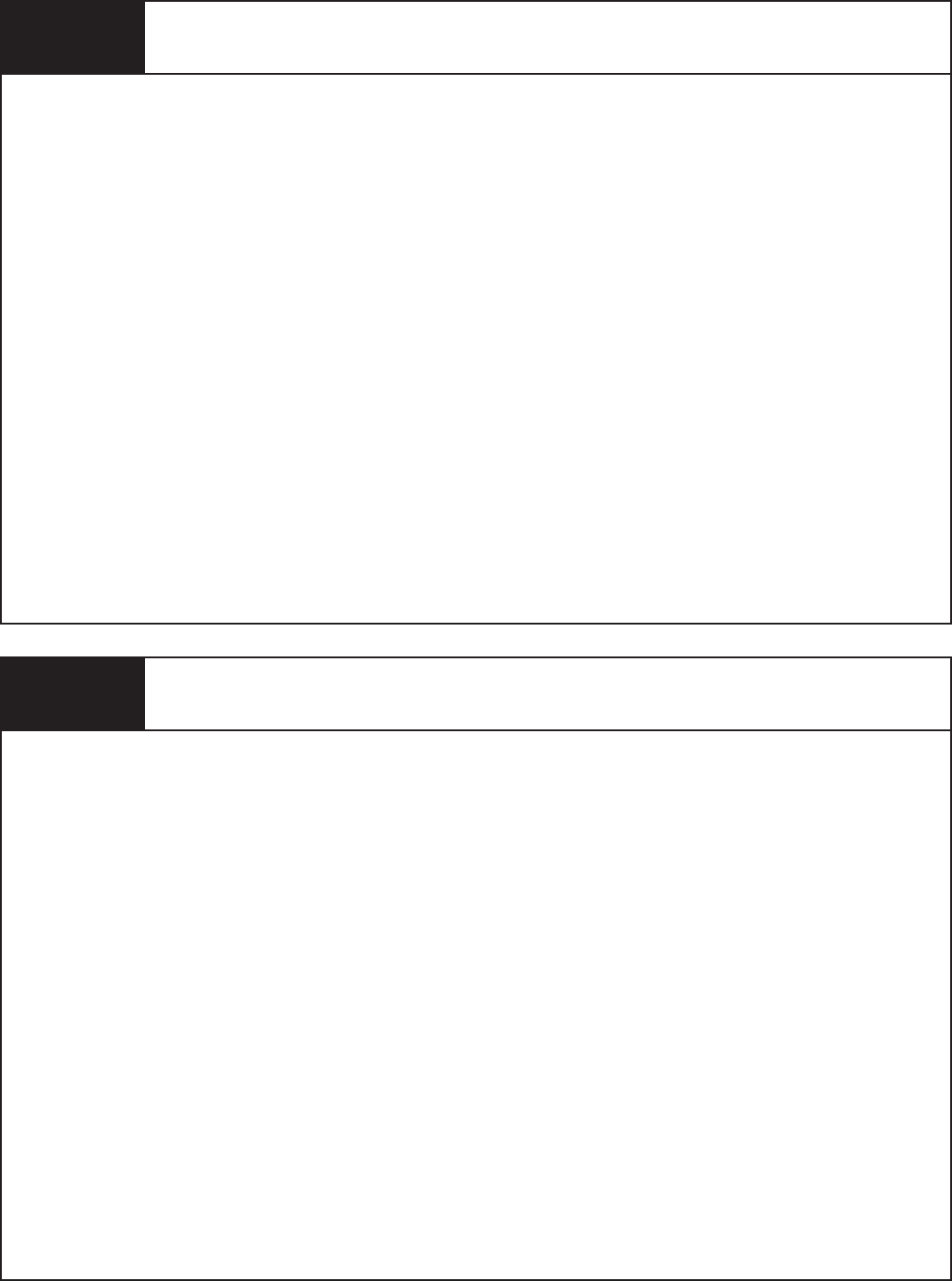
36
Please Do Not Return This Product To The Store. Contact your local Wayne-Dalton dealer.
To find your Wayne-Dalton dealer; refer to your local yellow pages / business listings or go to Find a dealer area online at www.wayne-dalton.com
Cleaning Your Garage Door
IMPORTANT: DO NOT USE A PRESSURE WASHER ON YOUR GARAGE DOOR!
While factory-applied finishes on garage doors are durable, it is desirable to clean them on a routine basis. Some discoloration of the
finish may occur when a door has been exposed to dirt-laden atmosphere for a period of time. Slight chalking may also occur as a result
of direct exposure to sunlight.
Cleaning the door will generally restore the appearance of the finish. To maintain an aesthetically pleasing finish of the garage door, a
periodic washing of the garage door is recommended.
The following cleaning solution is recommended:
A mild detergent solution consisting of one cup detergent (with less than 0.5% phosphate) dissolved into five gallons of warm water will
aid in the removal of most dirt.
NOTE: The use of detergents containing greater than 0.5% phosphate is not recommended for use in general cleaning of garage doors.
NOTE: Be sure to clean behind weather stripping on both sides and top of door.
CAUTION: NEVER MIX CLEANSERS OR DETERGENTS WITH BLEACH.
GLASS CLEANING INSTRUCTIONS
Clean with a mild detergent solution (same as above) and a soft cloth. After cleaning, rinse thoroughly.
ACRYLIC CLEANING INSTRUCTIONS
Clean acrylic glazing with nonabrasive soap or detergent and plenty of water. Use your bare hands to feel and dislodge any caked on
particles. A soft, grit-free cloth, sponge or chamois may be used to wipe the surface. Do not use hard or rough cloths that will scratch
the acrylic glazing. Dry glazing with a clean damp chamois.
NOTE: DO NOT USE any window cleaning fluids, scouring compounds, gritty cloths or solvent-based cleaners of any kind.
Surface Preparation for Painting
Wax on the surface must be removed or paint peeling/flaking will result. To remove this wax, it will be necessary to lightly scuff the
surface with a fine steel wool pad, saturated with soapy water. A final wipe and rinse should be done with clean water only, to remove
any loose particles and any soapy film residue.
Surface scratches, which have not exposed the metal substrate, can be lightly buffed or sanded with 0000 steel wool or No. 400 sand
paper to create a smoother surface. Care must be taken to not expose the substrate under the paint. Once the substrate is exposed, the
likelihood for rusting is greatly increased.
If substrate is exposed, it must be treated to prevent rust from forming. Sand the exposed area lightly and paint with a high quality
metal primer, specifically intended for galvanized surfaces, to protect the area from corrosion. Allow for drying time on primer can label
before applying topcoat.
The surface of the factory-applied finish, that is being painted, must not be too smooth, or the paint will not adhere to it. It is advisable
to test in an inconspicuous area, to evaluate adhesion. If poor adhesion is observed, surface preparation for painting the factory-applied
finish must be repeated until desired results are achieved. Again, care must be taken to not expose the substrate under the paint.
Cleaning
Painting



